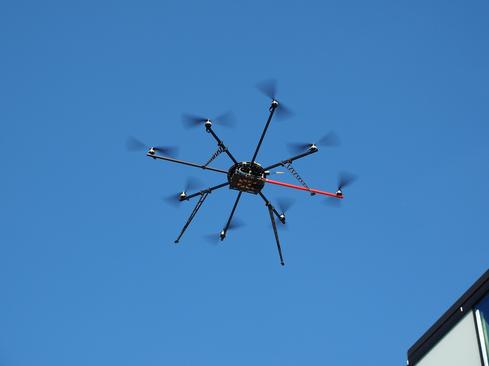The FAA's new drone rule, which takes effect in August, means any number of commercial uses are now possible. That is, once a business owner finds a certified drone pilot.


10 Tips For Hiring Top Tech Grads
10 Tips For Hiring Top Tech Grads (Click image for larger view and slideshow.)
When a new FAA rule governing the use of commercial drones, or unmanned aircraft systems (UAS), takes effect in August, it will open up a host of opportunities for businesses looking to incorporate the devices into their operations. While the new rule does not specifically address privacy concerns, the FAA is launching a privacy education campaign for all drone users.
The new rule, announced Tuesday, is rather straightforward, and could provide a boost to businesses stuck in something of a holding pattern for the past few years. The FAA released a draft rule for hobbyist and consumer UAS operation in 2015, but the rule did not encompass particular requirements for the commercial operation of drones weighing less than 55 pounds. The latest rule released by the FAA, known as the Small Unmanned Aircraft Rule (Part 107), tackles these concerns.
"With this new rule, we are taking a careful and deliberate approach that balances the need to deploy this new technology with the FAA's mission to protect public safety," said FAA Administrator Michael Huerta in a prepared statement. "But this is just our first step. We're already working on additional rules that will expand the range of operations."
[Drone are already in commercial use. Read FAA Approves First Commercial Nighttime Drone Flights.]
So what does the commercial drone rule say? The important parts are:
UAS pilots must be licensed by the FAA.
Commercial UAS operations must take place only between dawn and dusk.
All commercial UAS operations must be line-of-sight between aircraft and operator.
Operators must not endanger human life or do stupid things with their aircraft.
If someone is already a licensed pilot of any sort, other than a student pilot, then he or she must pass an online UAS class in order to become a UAS pilot. Those who don't already have a pilot's certificate must first pass the ground-school portion of flight training.
The new rule explicitly details certain drone uses. For example, it states, UAS payloads could include packages to be delivered, maintenance supplies, agricultural chemicals, or cameras -- as long as they're attached in a way that doesn't interfere with the safe operation of the drone. In essence, the rule means any number of commercial uses are now possible, once a business owner finds a certified drone pilot.
{Image1}
The "safe operations" category of the rule prohibits operating a drone indoors or above people who aren't involved in the operation. The latter requirement would make flying a drone over a movie set acceptable (since everyone on set is part of the movie-making process), while prohibiting the deployment of a camera-carrying UAS over a busy city street. However, the FAA allows for waivers to be granted, and an online waiver process is in place.
The agency stated it will provide all drone users with recommended privacy guidelines as part of the UAS registration process and through the FAA's B4UFly mobile app. The FAA also will educate all commercial drone pilots on privacy during their pilot certification process, and will issue new guidance to local and state governments on drone privacy issues.
In addition to the commercial drone rule, the FAA finalized a preliminary rule established for hobbyists that also goes into effect in August. In terms of deciding which rule applies to a particular operation, the line is deceptively clear: If the flight is for commercial or professional purposes, then it is covered under the commercial rule.
There are still, though, some rather sticky situations left to be resolved.
If you're on vacation, take some drone video, and put it up on YouTube, is it hobbyist or commercial use? The answer might seem clear, until you consider this: What if YouTube inserts an ad in your video? Is the video now commercial? What if your YouTube channel is so popular you actually see some revenue from those ads?
Sorting out such fringe conditions will keep attorneys busy. Meanwhile, for those eager to employ drones for commercial purposes, the FAA has taken a major step in issuing a rule that's far less restrictive than many observers had feared.
The skies, friendly or not, are set to become busier than ever in the months and years ahead.
About the Author(s)
You May Also Like







